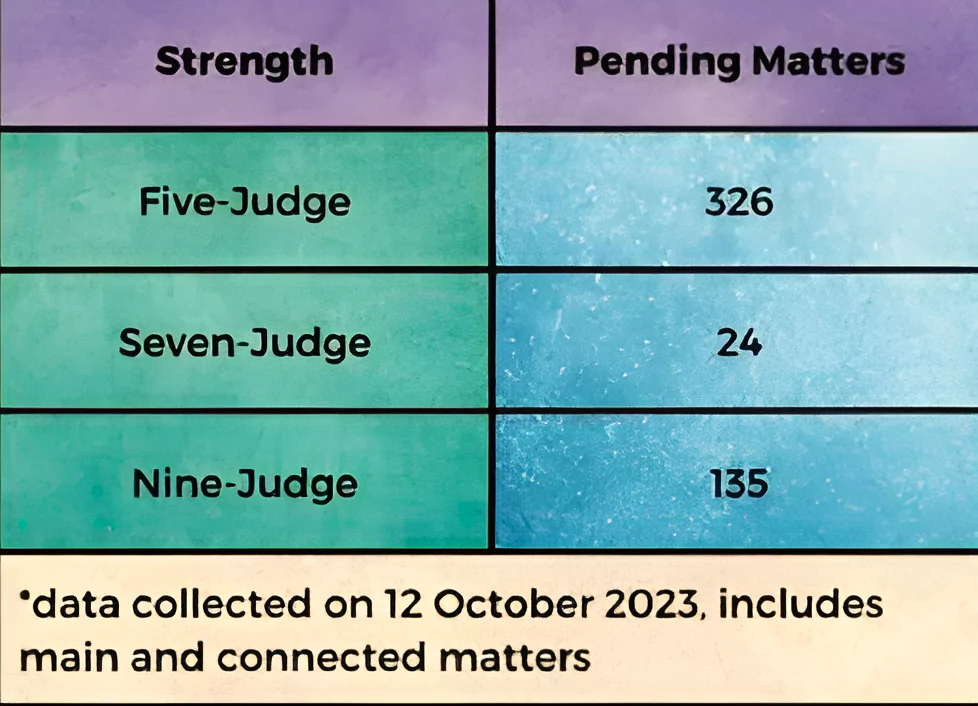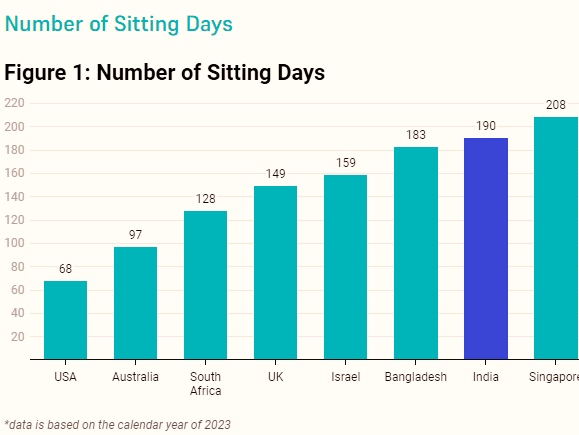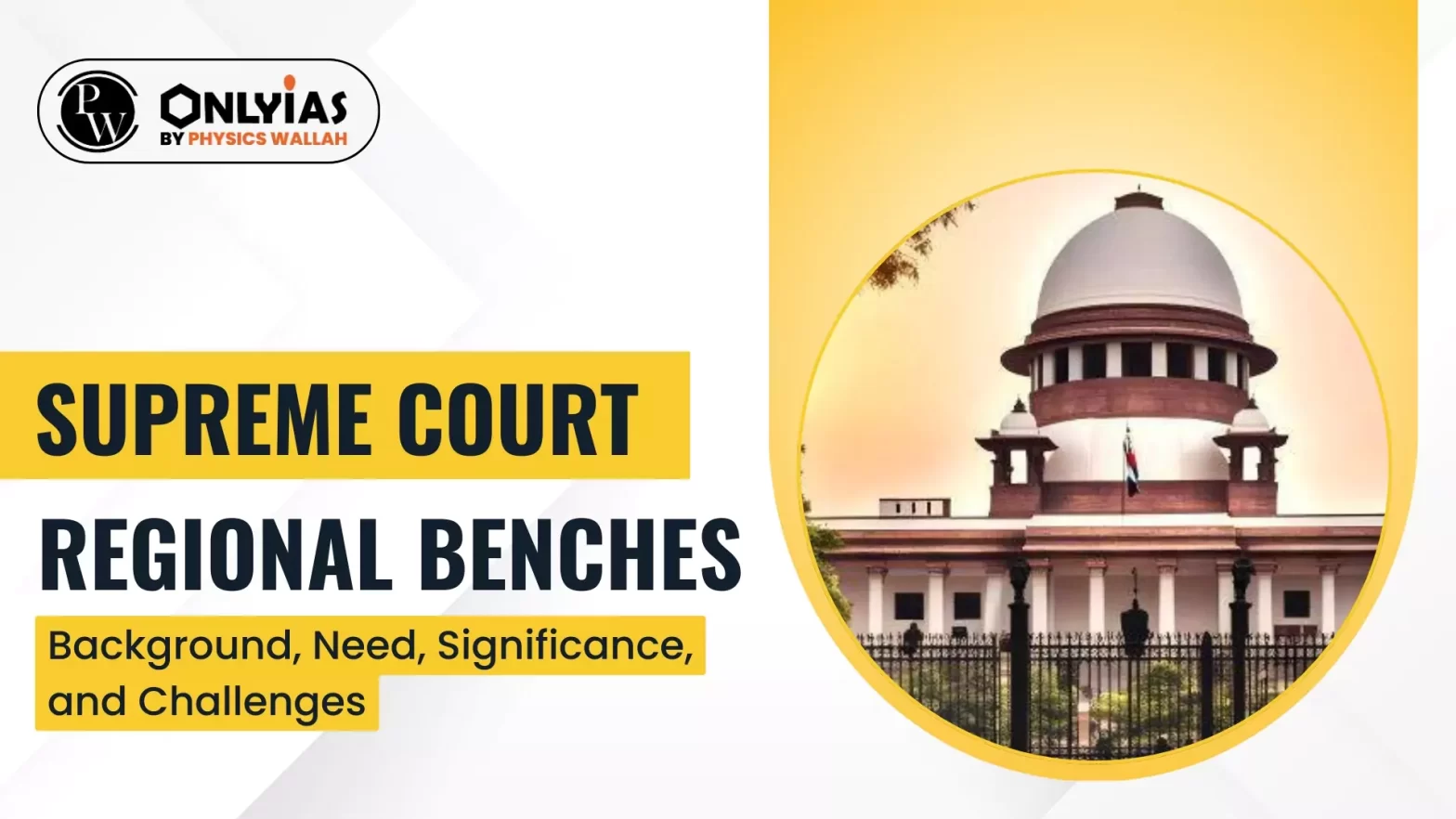Context:
This article is based on the news “When can a bill be designated as a ‘money bill’: SC to hear challenge” which was published in the Indian Express.
There has been a rising debate on the demand for Supreme Court Regional Benches after the recommendation of the Law Ministry.
About Supreme Court
- Highest Judicial Authority: Supreme Court of India Highest judicial court and the final court of appeal
- Constitutional Provision:
- Part 5 and Chapter 6 (The Union Judiciary) of the Indian Constitution mention the Supreme Court of India.
- Articles 124 to 147 in Part 5 of the Constitution deal with the organisation, power, jurisdiction, etc of the Supreme Court.
- Composition: Currently, the Supreme Court consists of 34 Judges (one chief justice and thirty-three other judges)
- Seat: The Constitution declares Delhi as the seat of the Supreme Court. It also authorises the CJI to appoint other places or places as the seat of the Supreme Court.
|
Supreme Court Regional Benches: Background
- Law Commission Recommendation: In 2009, the 18th Law Commission also recommended the formation of regional benches of the Supreme Court of India.
- Private Member Bill (2021): It raised the demand to set up four regional benches of the Supreme Court in Delhi, Mumbai, Chennai, and Kolkata for the North, West, South, and East zones, respectively, to decentralise the Supreme Court.
- Parliamentary Standing Committee: The Parliamentary Standing Committee on Personnel, Public Grievances, Law and Justice informed the Lok Sabha that the Law Ministry has accepted its recommendation to establish regional benches of the Supreme Court across India.
- The Apex Court has consistently rejected the idea of the Regional Bench of the Supreme Court.
What Are Supreme Court Regional Benches?

- Supreme Court regional benches are proposed judicial establishments where a few judges from the apex court sit periodically to hear cases from specific regions of the country.
- This essentially means that the Supreme Court would have branches in different parts of the country, allowing for easier access to justice for people residing in those regions.
- Article 130, which states “The Supreme Court will sit in Delhi or such other places as the Chief Justice of India, with the approval of the President, may appoint”, mentions regional benches.
Why Do We Need Supreme Court Regional Benches?
-
Argument in Favour to Establish Supreme Court Regional Benches
-
-
Pendency of cases:
-
Justice More Accessible to People:
-
-
- Article 39A: It states that “the state shall secure that the operation of the legal system promotes justice, based on equal opportunity, and shall ensure that opportunities for securing justice are not denied to any citizen because of economic or other disabilities.”
- Article 130: The Supreme Court will sit in Delhi or in such other places as the Chief Justice of India, with the approval of the President may appoint.
- Article 136: It vests the Supreme Court of India with a special power to grant special leave to appeal against any judgement or order or decree in any matter or cause passed or made by any court/tribunal in the territory of India.
|
-
-
Geographical Inaccessibility:
-
-
- The Parliamentary Standing Committee observed that the Delhi-centric Supreme Court creates a significant hurdle for litigants from faraway areas of the country and denies them the fundamental right to access justice.
-
-
Reduce the workload of the Supreme Court:
-
-
- Presently there are 34 seats of judges in the Supreme Court, which is much less in comparison to the population of the country.
 The formation of Supreme Court Regional Benches will increase the number of judges’ seats.
The formation of Supreme Court Regional Benches will increase the number of judges’ seats.
- For Instance, The Supreme Court of India handles a significantly higher number of cases including appeals and original cases—with 28,651 cases instituted in 2022. In contrast, the US Supreme Court deals with a comparatively lower number of cases, ranging from 5,000 to 7,000 cases instituted annually.
-
-
Opportunity for Local Bars and Legal Professionals:
-
-
- The setting up of Supreme Court regional benches would lead to the Balkanization of the Supreme Court.
- The setting up of regional benches would also lead to greater opportunities and democratisation of the Bar, and a robust Supreme Court Bar at the regional level for example, the District Bars in Saket, Rohini, and Karkardooma.
-
Arguments Against to Establish Supreme Court Regional Benches
-
-
Separate Court of Appeal:
- Instead of setting up Regional Benches, the Law Commission of India in its 95th and 229th report recommended setting up a separate court of appeal.
- At present, the Supreme Court is overburdened with matters such as transfer petitions, arbitral appeals, etc which have no business hearing.
-
Need for High Court Reforms:
- Since a majority of cases filed in the Supreme Court do arise from the High Courts close to Delhi.
- Instead of setting regional branches of the Supreme Court, a mechanism should be put in place to scrutinize the types of petitions that are permitted to be admitted to the top court by making significant reforms in the High Court.
-
Fragmentation of Law:
- Different benches might interpret laws differently, leading to conflicting judgments and legal uncertainty.
- Divergent interpretations could create a “patchwork legal system” with varying standards across regions, potentially harming business and investment.
-
Potential for Regional Bias:
- Judges in regional benches might be more susceptible to local political pressures or social influences, leading to biased decisions.
- This could undermine the impartiality and national perspective excepted from the Supreme Court.
-
Increased Costs and Logistical Challenges:
- Setting up and maintaining Supreme Court regional benches across India would be expensive, requiring resources for infrastructure, staff, and security.
- Coordinating schedules, logistics, and communication between different benches could create administrative difficulties.
-
Dilution of the Supreme Court’s Authority:
- Supreme Court Regional benches might overshadow or weaken the central authority of the Supreme Court, potentially diminishing its national stature and impact.
- This could lead to confusion about which bench to approach for specific cases, creating complexities in navigating the legal system.
Conclusion
The establishment of Supreme Court Regional Benches presents a significant step towards enhancing access to justice and expediting the legal process across the diverse landscape of the nation.
News Source: Writing Law and The Hindu
![]() 23 Feb 2024
23 Feb 2024


 The formation of Supreme Court Regional Benches will increase the number of judges’ seats.
The formation of Supreme Court Regional Benches will increase the number of judges’ seats. 